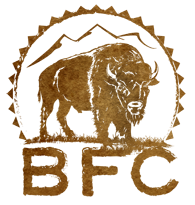For Immediate Release:
March 21, 2005
Contact:
Stephany Seay, 406-646-0070
West Yellowstone, Montana - This morning Montana Department of Livestock (DOL) agents captured six wild buffalo in the Duck Creek trap, on private land adjacent to Yellowstone National Park. For the past two weeks DOL agents have been baiting buffalo out of the park with fresh hay onto the private land where they operate a buffalo trap.
The buffalo captured today are all bulls, which pose no risk of brucellosis transmission. Further, there will be no cattle in the area until June, by which time the buffalo will have already migrated back into the Park. There are only a few cattle that arrive from out-of-state to graze smaller private parcels, and there are no grazing allotments on the western boundary's public lands. There has never been a documented transmission of brucellosis from wild buffalo to livestock.
The Duck Creek trap is located in a prime buffalo migration corridor, on land owned by Dale Koelzer, an admitted buffalo poacher. Koelzer allows the DOL and other agencies involved with the Interagency Bison Management Plan to use his house and property as their buffalo operation headquarters on the Park's western boundary.
According to Stephany Seay of the Buffalo Field Campaign, "We have been monitoring the movements of these buffalo and it is clear that they were baited onto Koelzer's property. The agents have been plowing the area around and within the trap, which enables fresh green shoots of grass to sprout, and they have been baiting the buffalo with fresh hay. There are no horses or cattle around. America's last wild buffalo are being lured out of Yellowstone into a trap that lies on the private property of a known buffalo hater, all with federal tax dollars. This should be illegal."
"The DOL will justify today's capture by saying that these bulls were "unhazable" or that they were trampling private property rights. If that's the case, it's only because they have grown accustomed to the fresh hay being doled out by DOL agents in an attempt to keep the buffalo in the vicinity of the trap," said Dan Brister of the Buffalo Field Campaign.
"Dale Koelzer doesn't want buffalo on his land, so why would he choose to live next to Yellowstone National Park in a known migration corridor, lock his gate open, and lure the buffalo onto his land with hay? If Koelzer has such a problem with wild buffalo he should consider living elsewhere." Said BFC's Josh Osher.
Stephany Seay added, "The buffalo migrate along three water courses on the west side: the Madison River, Cougar Creek, and Duck Creek. They are trying to get just a few miles further to the Horse Butte Peninsula. Horse Butte is publicly owned national forest land surrounded by water. Horse Butte provides a natural buffer, and is the buffalo's traditional birthing grounds. There are no cattle grazing allotments there, and our wild buffalo should have precedence there. These lands were set aside for the use of wildlife, not cattle."
Whether there are 1,000 buffalo or 10,000 buffalo, they will always migrate out of the park, as buffalo are a migratory species. Much of the land surrounding Yellowstone National Park - the Gallatin National Forest - was set aside by Congress as wildlife habitat, yet the buffalo are not allowed to access it. They are the only species not allowed to leave the park, even though there are no cattle present during the times of year their instincts carry them into Montana.
"It's ironic that we're celebrating the release of the new buffalo nickel at the same time we're capturing and killing the last wild and genetically pure buffalo as they begin their spring migration. These animals have never spread brucellosis to cattle, and the fact that bulls are being captured, and may be sent to slaughter as has repeatedly happened in the past, demonstrates that this continuing buffalo war isn't about brucellosis; it's about the grass and who gets to eat it," said Mike Mease of the Buffalo Field Campaign.
Buffalo Field Campaign is the only group working in the field, everyday, to stop the slaughter of the wild Yellowstone buffalo. Volunteers defend the buffalo on their native habitat and advocate for their protection.







